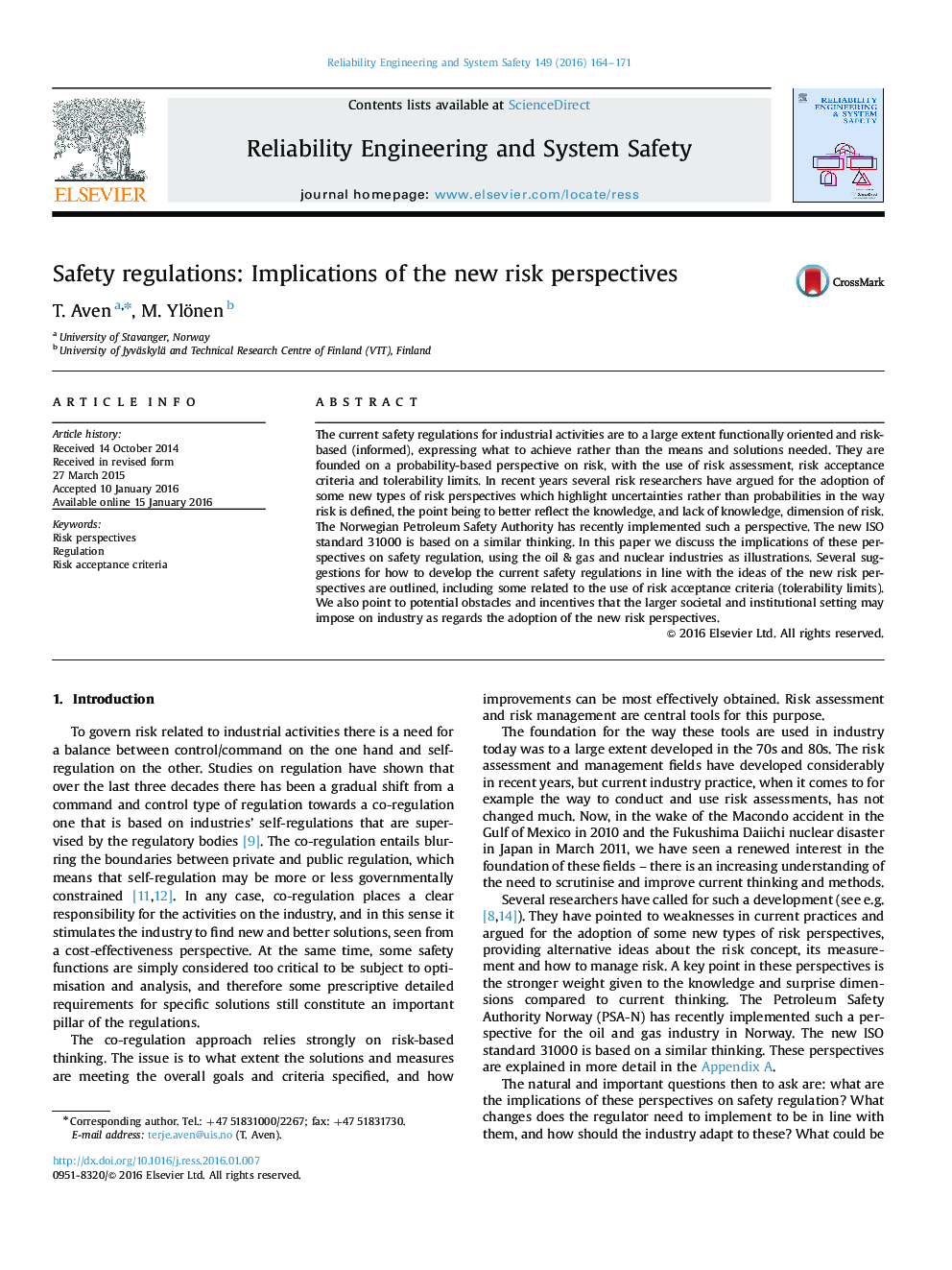| Article ID | Journal | Published Year | Pages | File Type |
|---|---|---|---|---|
| 807673 | Reliability Engineering & System Safety | 2016 | 8 Pages |
•Some new types of risk perspectives have been promoted.•They have been implemented for example by the Norwegian Petroleum Safety Authority.•The paper studies the implication of these perspectives on the risk regulation.•Suggestions for how to develop the regulations are provided•Obstacles and incentives for the implementation of the perspectives are pointed to.
The current safety regulations for industrial activities are to a large extent functionally oriented and risk-based (informed), expressing what to achieve rather than the means and solutions needed. They are founded on a probability-based perspective on risk, with the use of risk assessment, risk acceptance criteria and tolerability limits. In recent years several risk researchers have argued for the adoption of some new types of risk perspectives which highlight uncertainties rather than probabilities in the way risk is defined, the point being to better reflect the knowledge, and lack of knowledge, dimension of risk. The Norwegian Petroleum Safety Authority has recently implemented such a perspective. The new ISO standard 31000 is based on a similar thinking. In this paper we discuss the implications of these perspectives on safety regulation, using the oil & gas and nuclear industries as illustrations. Several suggestions for how to develop the current safety regulations in line with the ideas of the new risk perspectives are outlined, including some related to the use of risk acceptance criteria (tolerability limits). We also point to potential obstacles and incentives that the larger societal and institutional setting may impose on industry as regards the adoption of the new risk perspectives.
